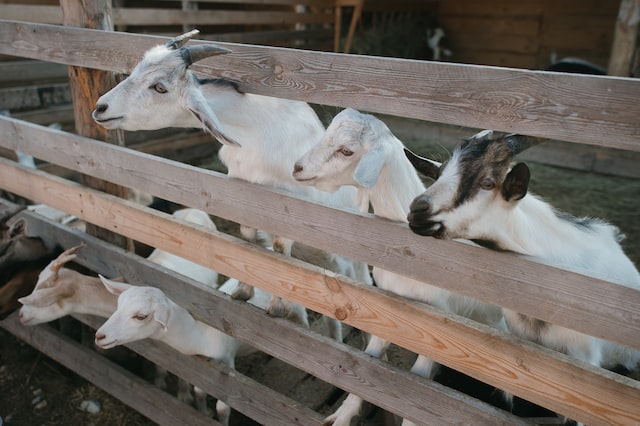
The Purpose
Development of a goat production Centre to serve as a model genetic resource for goat improvement, thus affording opportunities for youth training, and poverty alleviation.
Organizational Structure
The goat Centre will be made up of two branches:
- Goat production
- International research; both of which will be interdependent. The flow chart attached above shows the relationships between the two branches.
With these capabilities, the laboratory can enable the design of cost efficient and balanced feeds using local or regional products. It can also enable the optimised use of commercial feeds by providing the information that farmers can use to adjust feeding programs to achieve optimal animal health and productivity. Lastly the laboratory can provide data for establishing local and regional databases of feedstuff nutrient content that can be used for the local calibration of NIR spectroscopy tools used for both feedstuff and feed analysis.
National Goat Production Centre
TThe goat production Centre will be made up of the departments of:
- Meat production packaging and processing
- Feed mill and feed production.
- Rapid multiplication, artificial insemination, and live genetics.
- Milk production, bottling and processing
- Poverty alleviation farms.
Meat Production, Processing and Packaging Department:
This is the goat production project proper. This involves
- The building of the physical facility to house the project site with capability of growth to 5000 head of goats, including initially 300 meat goats and followed later on with a dairy goat milking flock of 300 in the second phase. The physical facilities for the Centre, barns, labs and offices would require approximately 30 acres (approximately 12 hectares). Adjacent land for the feed mill, animal abattoir, pastures, forage/grain development can be accommodated with the remaining 30 acres of land. While main facilities are being built, adjacent pastures should be fenced for continuous annual, rotational pastures, so designed so as to easily feed supplements as needed.
- Identification of goat breed types, breed productivity and availability for production project development.
- Construction of an abattoir for processing of producers goats.
- SEstablishment of a facility to manufacture products such as specialty cuts, sausage, etc
Feed Mill and Feed Production Department
The Objective is the development of livestock feed resource through the building of a feed mill. Justification: A study conducted for the presidential task force on alternative feed formulation in Nigeria, (Omole and Tewe 1991) revealed that processing technologies available for feedstuffs in Nigeria include: - drying, smoking, roasting, boiling, chopping/chipping/slicing, shredding, grinding, grating, fermenting, extrusion, ensiling, chemical treatment and compacting. Technologies commonly used at the peasant farmer level consist of: - Sun drying on open fields, concrete slabs, abandoned motor highways, rock surfaces or in cribs. Fermenting in earthenware, pots or other containers, streams and edges of rivers. Smoking by firewood, sawdust, palm kernels, oil palm fruit fibre and dried straw materials listed above. Therefore, a critical component for the success of the goat project is extensive scientific research on feed nutritional quality for optimal growth and management of animals. Accordingly, the feed production department will collaborate with the nutrition research department to establish farmers cooperatives to produce year-round commercial quantities of feed components including maize, forage crops, cassava, ground nuts etc. The goat Centre will purchase the feed components from the farmers cooperatives, and thus create jobs for the producers. Construction of Feed Mill Example of feed mill is presented below. It is recommended that the mill be equipped with a horizontal grinder/mixer to accommodate grinding of various plant forages (i.e. millet, alfalfa or ground nut shoots) to be incorporated into feed rations as a source of roughage. Identify sources of grains and other feed ingredients. Feed mill construction as shown below cost around $150,000. Alternative plans for feed manufacture and delivery involves construction of a large covered barn with numerous bays to storage feed ingredients. The ingredients from these bays can then be loaded into a grinder-mixer with a tractor front end loader or portable auger system) as needed for formulating rations. The grinder/mixer can then be used to deliver feed into troughs for goats.

